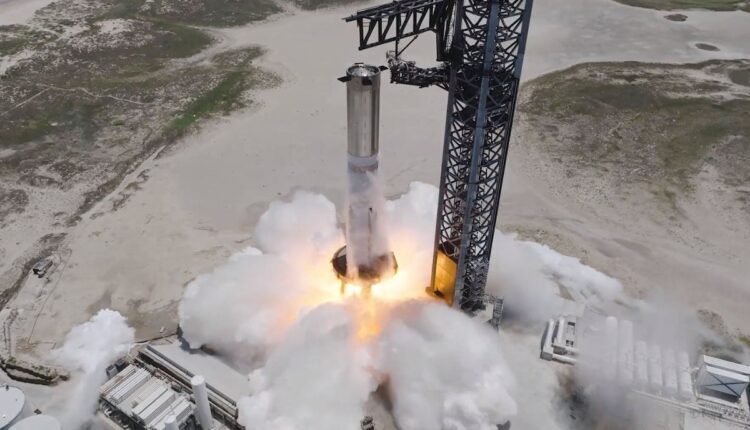SpaceX started engines test for its new Starship prototype
On the south coast of Texas, the engine tests of the next SpaceX rocket, the interplanetary ship Starship, were carried out
The next rocket in SpaceX’s Starship interplanetary ship program has taken a step forward for flight, with a brief firing of the rocket’s 33 Raptor first stage engines. The ‘static fire’ test of the so-called ‘Booster 9’ occurred on the new launch pad built at Space X’s Starbase on the South Texas coast.
Not all engines worked perfectly; four of them shut down prematurely, SpaceX representatives said during a webcast of the test on August 6, Space.com reports. But the rest worked, and both Booster 9 and the launchpad came out of the test intact.
Starship, SpaceX’s next-generation transportation system, which is designed to take people and cargo to the moon, Mars and beyond, has a full flight test under its belt. That mission was launched from Starbase on April 20, with the goal of sending the prototype ship called Ship 24 around Earth; the splashdown was aimed at the Pacific Ocean near Hawaii. However, that did not happen; Starship experienced several problems shortly after liftoff, and SpaceX sent a self-destruct command, destroying the vehicle over the Gulf of Mexico.
The April 20 launch also caused considerable damage to Starbase’s orbital launch pad and some surrounding infrastructure. To prevent that from happening again, SpaceX installed an undermount water deluge system: a water-spouting steel plate designed to dampen the tremendous energy generated by the 33 Raptors of the Super Heavy rocket that powers the ship.
The new deluge system seemed to work well during testing on August 6, as large amounts of water shot toward the burning Raptors. The upcoming flight test will include Booster 9 and an upper stage prototype called Ship 25. It will have similar goals to the first liftoff, SpaceX founder and CEO Elon Musk has said.
It is unclear when that launch will take place, however, as technical issues aren’t the only hurdles SpaceX must overcome. For example, a coalition of environmental and indigenous groups is currently suing the US Federal Aviation Administration (FAA), which licensed Starship launches from Starbase. The lawsuit claims the agency failed to adequately assess the damage such liftoffs could cause to the South Texas ecosystem, and calls for a more stringent environmental review before more Starships lift off from the site.
Source: dpa
(Reference image source: SpaceX, Europa Press / dpa)
Visit our news channel on Google News and follow us to get accurate, interesting information and stay up to date with everything. You can also see our daily content on Twitter and Instagram


